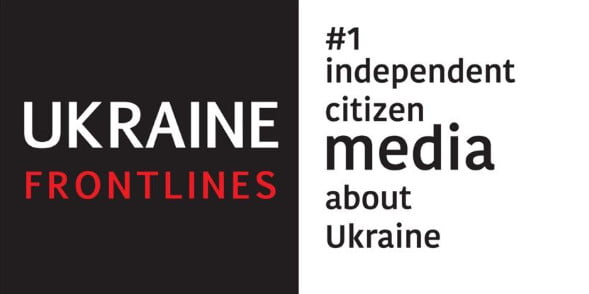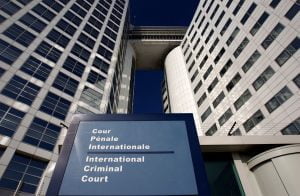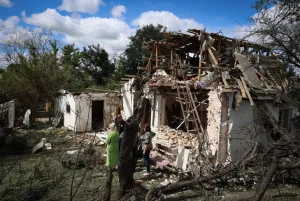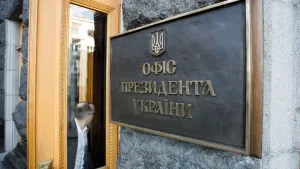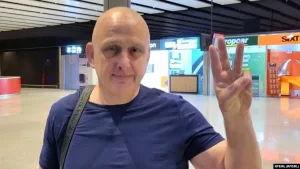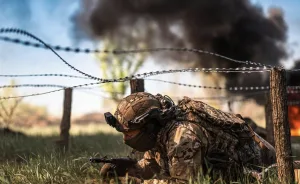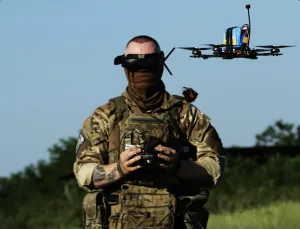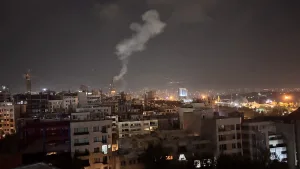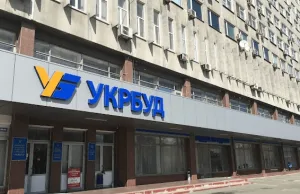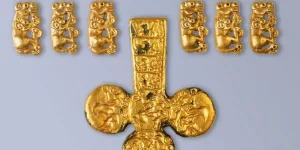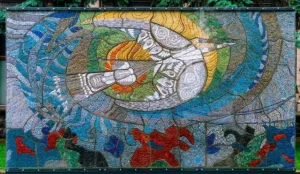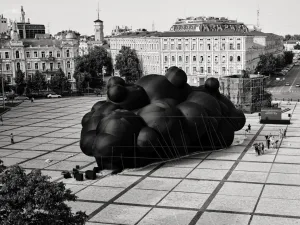77 years ago the Victory Flag was raised over the Reichstag. In the post-war decades, thousands of documentaries were made in the former USSR, and thousands of books were written about the events of 1941-1945.
And this is not surprising: the Victory was too expensive for the nations that inhabited the former Soviet empire to keep silent about them.
But the issue is that both directors and writers, following the will of the party leaders, were often forced to manipulate historical facts and even grossly falsify them.
An example of this was set by the general secretaries of the Communist Party of the Soviet Union, which were well acquainted with the realities of the war, but could not openly answer many questions. For example, how did the Germans manage to occupy Kyiv in 3 months and capture almost 600,000 Soviet soldiers? Why did the German attack happen treacherously if Soviet intelligence, including the legendary Richard Sorge, warned about its probability long before June 22? Why did we have to fight not on foreign soil, as Comrade Stalin assured, but on our own, allowing the Germans to occupy Ukraine, Belarus, and much of Russia?
If the Kremlin’s centenarians had given comprehensive answers to these and other similar questions, it would have become clear that they, the creators and leaders of the only and powerful, were to blame for the deaths of tens of millions of Soviet citizens. Therefore, on their instructions, the war was falsified and mythicized. Even the marshals of the USSR among the commanders of the fronts, who knew the true price of Victory, could not write the truth in their memoirs!
Myth № 1: “Hitler is our worst enemy”
For decades, citizens of the former Soviet Union have been convinced that the Soviet Union and Hitler’s Germany were sworn enemies. But the facts prove otherwise: almost until the beginning of the war, the two countries worked closely together. On December 23, 1939, Pravda published telegrams from Hitler and Ribbentrop in which they heartily congratulated Stalin on his 60th birthday. Stalin replied: “The friendship between the peoples of Germany and the Soviet Union, which was bound by blood, has every reason to be longstanding and strong.”
From the first days of World War II, the USSR supported the aggressor. For example, on September 1, the Soviet Union provided Germany with a radio station in Minsk, which acted as a beacon to guide Luftwaffe fighter-bombers to Polish cities. On September 17, Stalin informed the German ambassador that the Red Army was beginning to occupy Poland. On the same day, Soviet troops occupied Ternopil and Rivne, the next day – Kolomyia, Stanislaviv (now – Ivano-Frankivsk), and Lutsk.
On September 22, 1939, a joint military parade was held during the surrender of Brest to the Soviet side. The ceremony was attended by units of the Wehrmacht Motorized Corps under the command of Heinz Guderian and a separate tank brigade of the Red Army led by Semyon Krivoshein.
Myth № 2: “The Germans treacherously attacked”
We knew from school textbooks that the Soviet Union was not ready for war and was subjected to a “treacherous attack.” But the facts say otherwise. For example, in the late 1930s, it was the most militarized country in the world: military spending in 1939 was 26 percent of the budget or 12 percent of the country’s GNI. In Germany in the same year, these figures were 23 percent and 9 percent, respectively.
On May 5, 1941, Joseph Stalin addressed the graduates of military academies, “We have been holding the line of defense for some time. And now, after we have reconstructed our army, saturated it with equipment for modern combat, having become stronger, we must move from defense to offense. It is our duty to defend our country.”
Myth № 3: “The Germans destroyed Khreshchatyk street in the central Kyiv”
The Soviet people believed in a story which assumed that the Nazis practically blew up Khreshchatyk, destroying dozens of houses, including historical monuments in the city center. In fact, this was done by Soviet troops using radio-controlled landmines. The explosions on Khreshchatyk took place on September 24, and huge fires broke out. The Germans tried to extinguish them by stretching hoses to the Dnipro River and pumping water. However, the Soviet underground movement cut them. More than 300 houses around Khreshchatyk were destroyed by the Chekists, leaving thousands of Kyivites homeless.
And who blew up the Dniprohes, as a result of which about 100,000 civilians of the surrounding villages and retreating Red Army soldiers died in the water? NKVD officers. The goal was to prevent a rapid Wehrmacht offensive. The Germans lost less than 2,000 soldiers.
Myth 4: “Ukrainian nationalists are Hitler’s loyal servants”
In Soviet times, the Nakhtigal, Roland battalions, and Galizia division, in which Ukrainians served, were officially considered SS units. Current Russian propagandists went further, claiming that “their personnel took part in punitive actions against civilians, and, in general, all Ukrainian nationalists were traitors and puppets of the Germans.”
In fact, Nachtigall and Roland had never been SS units, and they were not initiated by SS Reichsführer Himmler but by the OUN. The OUN members saw these battalions as the basis for the future Ukrainian army. After all, at the beginning of 1941, the OUN leadership knew about the preparations for the war between Germany and the USSR. They hoped that at the very beginning of the war, it would be possible to raise a rebellion on the territory of Ukraine and create an independent state.
The German side had slightly different plans, considering the Nachtigall and the Roland as reconnaissance and sabotage units that were to organize sabotage against Soviet troops. These tasks differed significantly from the tasks of the SS.
Privates and part of the battalion command staff were Ukrainians. They had military ranks, not SS, and their German commanders were also from the Wehrmacht. Despite the OUN’s hopes, the participation of both battalions in hostilities was limited.
The history of the Galicia division was absolutely different. It was created in the spring of 1943 in Eastern Galicia. Although the abbreviation “SS” was present in the official name of the formation until April 1945, the division was a purely military formation from the very beginning. There were more than 40 such divisions, half of which were citizens of the countries occupied by Germany and its allies: Croats, Latvians, Estonians, Hungarians, French, etc. The Galicia division was planned exclusively for combat operations at the front together with the Wehrmacht.
Ukrainians considered being a part of the Galicia division as an opportunity to gain military experience and get weapons to join the UIA later, which at that time did not have the opportunity to train and arm such a large number of soldiers. Others hoped that the division would be the basis for the organization of Ukrainian military units to fight the USSR, even on the side of the Germans. Some joined the division to avoid forced deportation to Germany. A certain part of the soldiers was forcibly mobilized to the division.
Myth № 5: “No one is forgotten, nothing is forgotten”
For decades, Soviet people have been persuaded that “no one is forgotten, nothing is forgotten.” These words became the leading propaganda slogan of the Soviet regime after the war. But was it so? No. After the war, the Soviet Union claimed 7 million casualties, 20 million were named later, and the death toll “rose” to 27 million before the collapse of the Soviet Union. Meanwhile, the total casualties are still unknown. After all, there was no systematic accounting of losses: a high number of dead still lie in the old trenches.
Candidate of Historical Sciences Volodymyr Viatrovych,
“Even today, the Russian government is running the forms and meanings of Soviet propaganda at full throttle. Its language consists of terms from the vocabulary of the Second World War: the Ukrainian government – “fascists,” the Ukrainian army – “punishers,” terrorists who oppose us – “militias.”
Myths about the Second World War are used by Russia not only in Russia or Ukraine but also in Europe and the whole world. Russia has monopolized the victory of the Red Army over fascism, although millions of Ukrainians and members of other nations fought in its ranks. Kremlin propagandists still feed on Soviet myths, which the Russian society is accustomed to.”
There was no place in the victorious version of the war for Soviet prisoners of war. Various researchers say there are from 4.5 million to 5 million 750 thousand. The Germans killed at least half a million Soviet prisoners of war. Another 2.6 million prisoners died of starvation, inhumane conditions of detention, and transportation. Most of those mobilized returned from this war cripples. After the victory, they worked at odd jobs and begged on the streets. All these people were an “indecent background” for the victorious country. In 1949, in places far from the central cities, the Soviet government organized homes for the disabled. Veterans were placed there for the most part by force. They were held as prisoners. Officially, the authorities did not mention them. So much for no one is forgotten, nothing is forgotten!
And who has heard of the so-called black jackets? They were Ukrainians who were mobilized into the Red Army with the liberation of their towns and villages. Untrained, unarmed, they were thrown into battle, where most died!
Tags: Russia russia ukraine war Ukraine